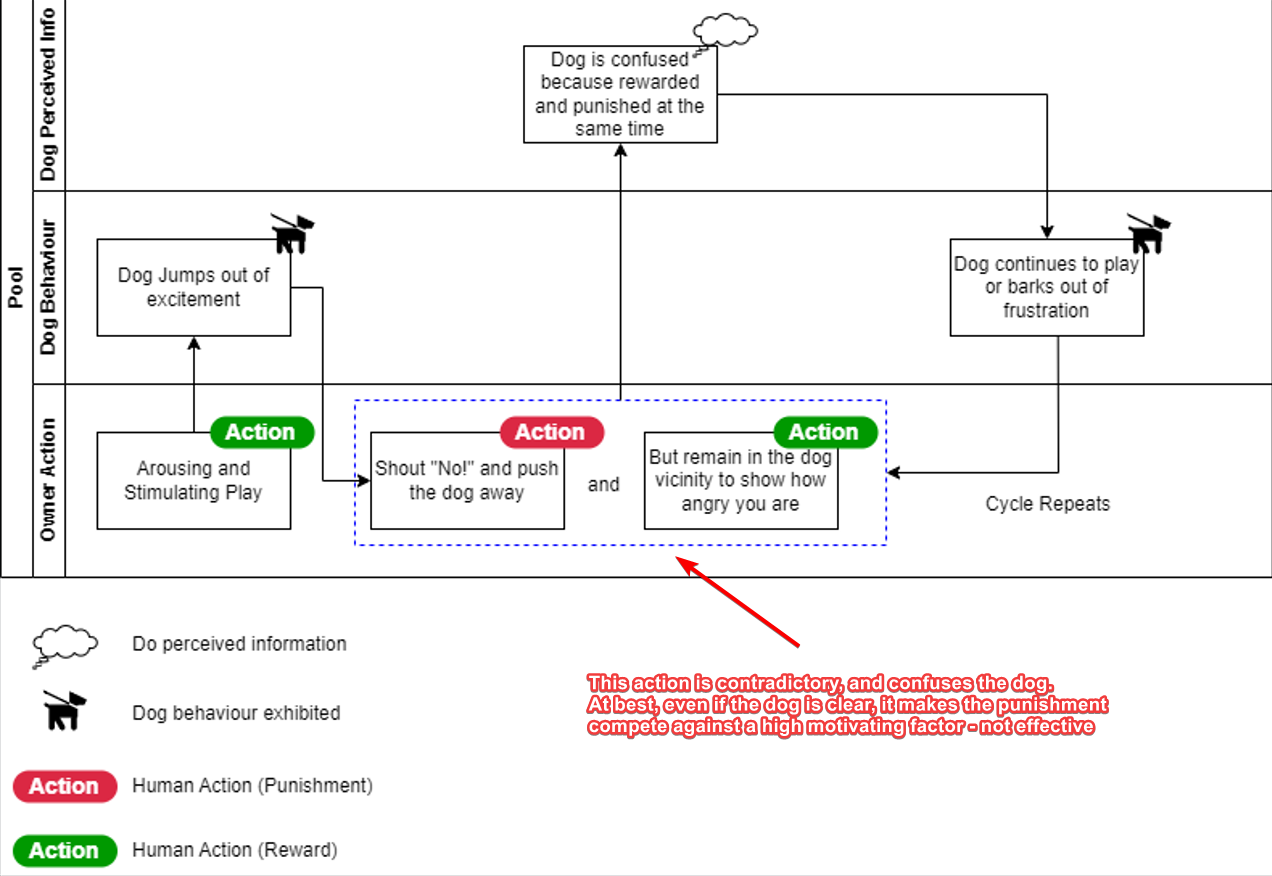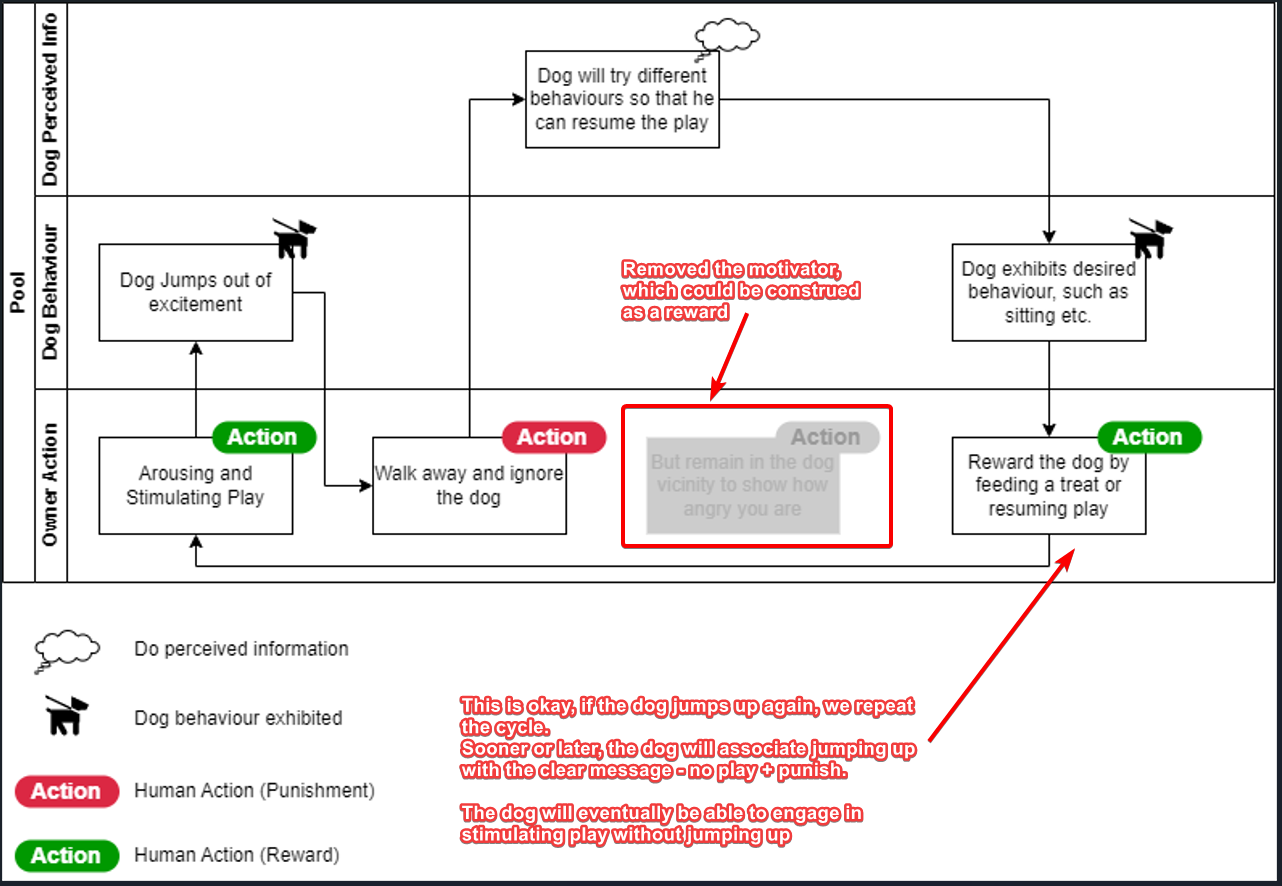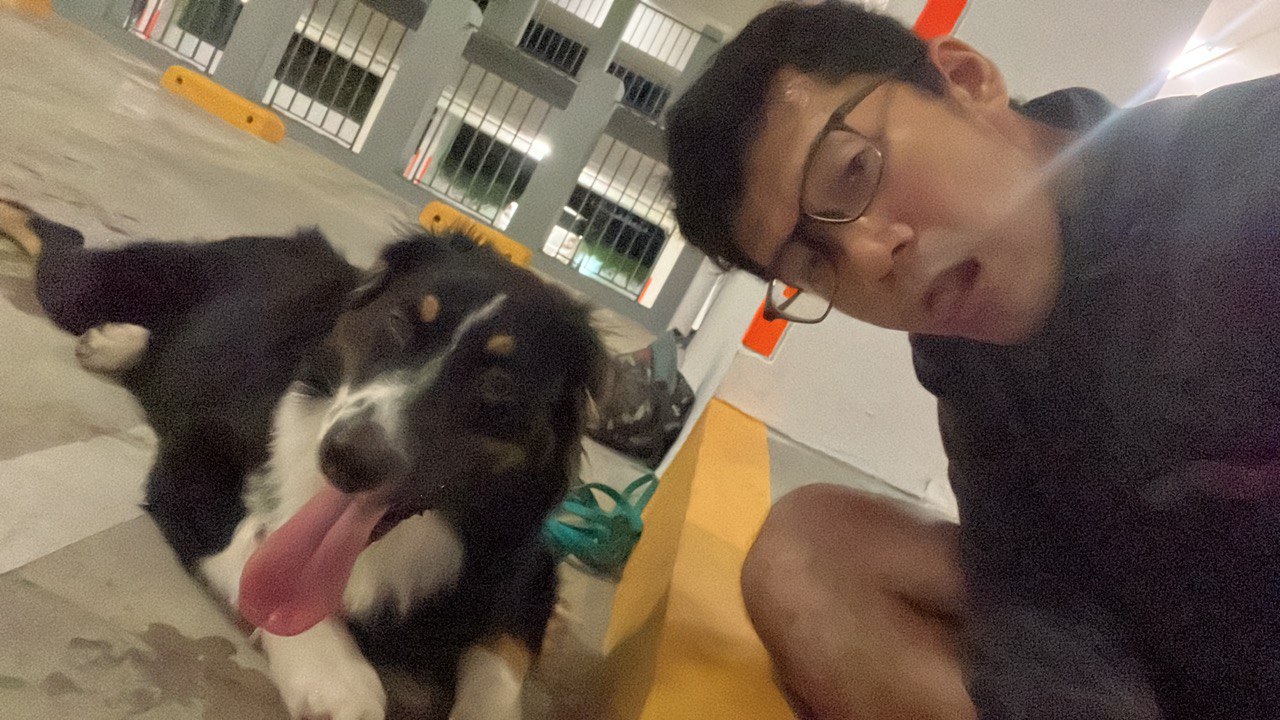How to stop Stormy from Jumping Up!
A recent encounter with my dear Stormo! We have a relatively boisterous relationship, in a sense were we engaged in highly stimulating play. Some of the games that we play are:
- Tug!
- Ball, Throw and Chase!
- Fetch!
Although it was yet to develop into an issue, Stormy does tend to jump up when he gets highly aroused - his self-control is not yet there to stop him (excusable I guess, since still a 6-month puppy?). Although excusable (imo), it’s still a behaviour that we would not like to reinforce.
Because although I’m okay with it, other people might not be okay with it.

And of course, I try to stop the behaviour using the traditional “No!” in an angry tone, alongside giving him my sternest frown. As you can already guess, this approach is imprecise and we’ll elaborate on why in the subsequent sections.
Motivations for Jumping
We’ll start by painting the context that the dog is in, and the motivation for jumping.
In our current scenario, the dog is engageed in highly stimulating and arousing play. His adrenaline is probably shooting through the roof (plus he’s a pup, so forget about self-control).
Motivations for jumping would be pure excitement and wanting to initiate the play.
Actions Taken (Incorrect)
As briefly mentioned earlier, I stop the play and give a stern “No!” when he jumps up. The idea is that, the positive punishment (scolding), would be sufficiently aversive to stop him from repeating the activity.
As always, life gives us lemons – Stormy would more often than not try the jump one or two more time. Each jump followed by a stern “No!” and a light push to highlight that I don’t want him on me.
Some of the times, we can sense that Stormy does get frustrated and starts barking! Terrible >< ! At this point, obviously the approach that I’m taking is not working well.
Fortunately, behaviour consultant (a.k.a. lovely wife) noticed the inaccurate techniques being applied, and advised otherwise.

Actions Taken (Correct)
Based on the advise given, my approach is inaccurate because of the following:
- It is aversive, which could lead to undesired behaviours due to frustration
- We are competing against a highly stimulating play environment, which means the perceived aversive impact of the postitive punishment technique must be more “painful” than the “reward” received from the play.
- Sounds a little reckless?
- Does it mean if it doesn’t work, I’d need to increase the “pain” of the punishment
- Bluntly speaking, yes. And that’s why it’s not the most effective technique to be applied within this context
- The highly stimulating motivator, the play, is still there. Which also means that the punishment would less likely be effective - since the “reward” factor is still there. Not to mention, we’re giving the dog mixed signals, it might be confusing to the dog.
A better approach would be negative punishment. This is done simply by abruptly stopping the play and leaving the game by walking away. Similar to when you piss off your friend when you’re a kid, it’s best if we act like the pissed off kid, and walk away, do not give any attention to the dog.

Think you guys would be able to guess now, why the application of this technique is more precise and effective:
- Yes, this approach is still aversive. We are removing a highly desirable factor from the dog’s immediate presence
- In this scenario, that’s me :D.
- However, by removing the highly motivating factor, the punishment is no longer competing with the availability of play
- The dog will try different behaviours so that it can resume the play
- When it exhibits the desired behaviour (e.g., sitting down etc.), we can reward it by a treat or simply by resuming the play
- Since we highly motivating factor has been removed, the punishment is not only effective. It’s in sync with the messaging to the dog
- You jump
- No play and you get punished. No mixed messages here, it’s clear to the dog.
Should we continue the play?
So my follow up question was that, should we stop highly stimulating play completely? Because I really enjoy it ><, haha!

Fortunately, you don’t have to! Although during highly energetic and stimulating play, the dog may tend to jump – by repeating the training sequence above, the dog will get a clear messaging that if he jumps:
- Motivator (play) is removed
- Punished, by stopping the play
When the dog behaves, we continue the play.
If the dog misbehave, we stop – until the dog behaves again.
The dog will associate exhibiting good behaviour, with starting the play. And jumping up associated with stopping the play.
Over time with sufficient reinforcement, the dog should be able to play in a highly stimulating environment withou jumping up. Because from the dog’s perspective - it wants to continue the play. Any action that stops the play (such as jumping up), will not be useful for him.
Thank you!
So now, I continue to engage in highly engaging play with my fellow Stormo. But whenever an undesired behaviour is displayed - I ensure that there are no mixed messages.
- Walk away
- Stop the play

picture of me and Storm panting our hearts out after some aggressive shuttle runs with balls
There is no confusion that his behaviour is bad. Lucky Stormy is smart, he’s already jumping up less (but still jumping up haha!). Still work in-progress, but we’ll get there in due time, fingers crossed!
Thanks Storm!
Peace and Love
Shafik Walakaka